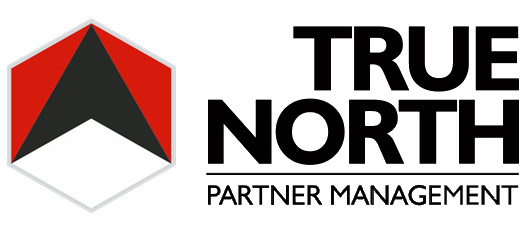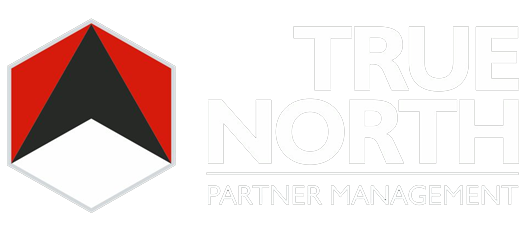The following post originally appeared on Forbes | Oct 30th, 2013
Generation Y catches a pretty bad rap in the media, see USA Today, The New York Times and The Atlantic, to name a few. Narcissistic, idealistic, entitled and attention seeking, these are just some of the labels they’ve been given by surveys and data in volumes too sizeable to ignore. Maybe you were in some store, in some mall, somewhere, bathing in condescension from the somehow pompous twenty-something cashier looking down their nose at you. Or maybe you were sitting in some coffee shop, on some street corner, somewhere, listening to two or three twenty-something’s loudly discussing their wholly uniformed views about what’s wrong with the world. Whatever your situation, no doubt you’ve experienced the Millennials that fill those surveys.
And while I can empathize – I’ve had my own run-ins – the same might be said of any cohort in their younger years. In compliment, the Millennial lawyers I’ve had the pleasure of engaging hardly reflect the media’s caricature. Maybe it is the level of education; maybe it is the barrier of entry to a legal career; maybe it is the typical INTJ personalities that pursue law; whatever the reason/s, the general consensus is hardly representative of the average BigLaw Millennial. By and large, they are attentive, hard working, earnest, and respect the job, their elders and their positions within the firm. And while they polarize from the media’s standard deviation in so many ways, there is a trait that they all seem to share: the trading of income for a more generous work/life balance.
Previously, such a thing was unheard of in BigLaw – you worked long and hard hours for lockstep pay, all the while, fighting towards a partnership spot. One might liken it to a quasi Hunger Game; if you’re in the arena, you have to play. And while the most recent (and still smoldering) recession has afflicted Generation Y with massive layoffs, delayed starts and significantly less 1st year recruitment, for some, it is a blessing in disguise.
 The Tournament
The Tournament
Per Wikipedia, the “Cravath System” is a set of business management principles developed at Cravath, Swaine & Moore in the 19th Century. The book, Tournament of Lawyers , written by Marc Galanter and Thomas Palay, does a pretty good job of explaining the ins and outs of this promotion system. In short, a law firm will hire the highest caliber 1st year lawyers that their reputation and money can buy, run them through a brutal 8 years of long hours, little food and even less hand holding – those that rise above, make partner; those that sink, are out-placed with clients or simply move on. This worked quite well for decades, and in the most elite firms, still continues today. For the rest of the pack, however, the Cravath System began turning into a pyrrhic victory.
The Elastic Tournament – Later Stage Permanent Positions
In 2008, Galanter, along with William Henderson, published (in the Stanford Law Review) an updated version of the Tournament of Lawyers entitled The Elastic Tournament: A Second Transformation of The Big Law Firm. In it, they thoroughly describe the pressures some of the (relatively) less prestigious firms were (and still are) experiencing from economic and generational shifts. Having less horsepower than the upper crust, these firms are left in a bit of a quandary: with higher leverage ratios and increased competition, their associate’s probability for partnership is significantly diminished, tarnishing the Cravath System’s brass ring.
Prestige is the key to a successful tournament. While partnership is a statistical improbability for even the most prodigious associates, the resume horsepower that comes along with working for the upper crust is an appealing consolation prize. But, if a firm offers its associates poor partnership prospects and only a gamble at getting another quality position after their 8th year, the firm loses its appeal to potential recruits – at least that is the perception. This, combined with the glaring reality that expensively incubated talent was just being sent to the curb forced many firms to bend their up-or-out policies to more effectively attract, retain and leverage talent.
The result of these conspiring pressures has been the later-stage “permanent” positions, such as Sr. Associate, Special Counsel, Jr. Partner, Non-Equity Partner, etc. These have allowed firms to hold onto really good, but not partner-good, talent, while dismissing those that are unprofitable. This newfound elasticity, while providing a (very) limited remedy to the cries of a squeezed associate market, did (and still does) little for the legal consumer. Fees weren’t dropping as a result, which, while in the flourishing economy didn’t really matter, became an issue as economic pressures swelled.
Off Track Associate Farms
The crash of 2009 struck a potentially crippling blow to the Cravath System’s absolutism. While the economy continues to squeeze the (already) lean BigLaw business model, Legal Process Outsourcing (LPO), though decades old, has been gaining traction in recent years as savvier legal consumers send more and more routine (and less complex) work oversees, into the hands of less expensive, but still capable foreign talent. This has posed a serious problem for most AmLaw firms in some way, shape or form. And as the weaker economy drags on, more and more work is being taken from 1st and 2nd year associates – a real sweet spot in the leverage algorithm.
Like breathing while buried up to your neck in sand, every inch that BigLaw concedes has been met with more and more pressure. Never known to just roll over, however, some firms are responding to the wakeup call. “Associate farms” have popped up in lower cost regions, where quality lawyers can use their degree and still live a relatively comfortable life, despite lower pay, less complex work and no partnership on the horizon. Reed Smith and Orrick, for example, have started offices in Wheeling, W.VA., where more routine work such as eDiscovery is performed by highly competent US lawyers at a fraction of NY salaries. WilmerHale did the same thing in Dayton, OH.
While these farms have allowed firms to compete with LPO’s and offer an option to lawyers that simply want to use their craft while leading a normal life, they are not an answer for the BigLaw Millennial population at large. To begin with, for many, moving to West Virginia (or Ohio, in WilmerHale’s case) is a non-starter. And, $60K a year, while being better than nothing, won’t pay down a $190K student loan in a hurry.
Early Stage Permanent Positions
The next stage of evolution – and possibly the beginning of the halcyon that BigLaw-grade Millenials have been seeking – is the true, early stage manipulation of the classic associate-to-partnership position. Several firms have been playing with this option, with the most recent being Greenberg Traurig and their “residency” position. Debra Cassens Weiss from ABAJournal had this to say:
“Greenberg Traurig is introducing a new residency program to hire talented associates who aren’t recruited in traditional on-campus interviews.
Associates in this program, being introduced at the firm’s 29 U.S. offices, can spend up to a third of their billable hours in training, the Am Law Daily (sub. req.) reports. They will bill at a lower rate and will earn a lower paycheck.
After a one-year trial period, associates in the program may have to leave the firm—or they could become a regular-track associate or become a “practice group attorney,” a new position for nonshareholder lawyers.
Some associates hired in the new program will likely come from schools outside the traditional schools Greenberg Traurig visits for on-campus interviews. Each office will be able to determine how many residents to hire.”
Duval & Stachenfeld LLP is another firm that has eschewed traditional hiring and promotion methodologies. Aside from outpacing the market with their $175K first year salary, they are offering their “Opportunity Associate Program,” which offers more speculative associates a 9 month probationary period to prove their worth. Starting at $70K, the compensation is less than ideal. However, if these trial runners can prove themselves, they are brought to a “Principal Associate” status (i.e., partnership track) or to the “Alternative Track Program” (i.e., a true early stage non-partnership track position).
There are two powerful forces at play, here. First the legal value chain is being forcibly dissected, defined and fed to various other service providers, potentially causing a loss of work for the firms – e.g., LPO’s or alternative structures such as Axiom. Second, the Millennial cohort – a necessary gear in the legal leverage machine – is becoming increasingly anxious with the traditional BigLaw environment, resulting in less engaged lawyers. The early stage permanent positions provide a solution to both. In a roundabout way, firms can now have an LPO “class” under their own roof. And while they may be more expensive than a true LPO, the perception of higher standards and better quality control should mitigate, if not prevent, the loss of work. Likewise, for the Millenials who just don’t want to compete in the tournament, there is finally a happy medium, where pay and hours are concerned. Associates and clients are happy.
Regarding the apprenticeship qualities of these positions, I concur with David Lat at Above The Law: “Beyond Biglaw, the GT approach reminds me of what law firms in Canada and the U.K. generally do with junior lawyers or lawyers in training, namely, pay less and train more…” In those markets, it is the norm to pay junior associates significantly less, train them more, and send them along, better prepared for success. While these non-partnership positions are still relatively few and far between, if the Big Four accounting industry – arguably, the model /path that BigLaw is following – or the less-financialized, but more mature UK market can give us a glimpse into the future of American BigLaw, positions like Greenberg’s and Duval’s may gain traction, redefining the rules that governed the BigLaw Hunger Games.



